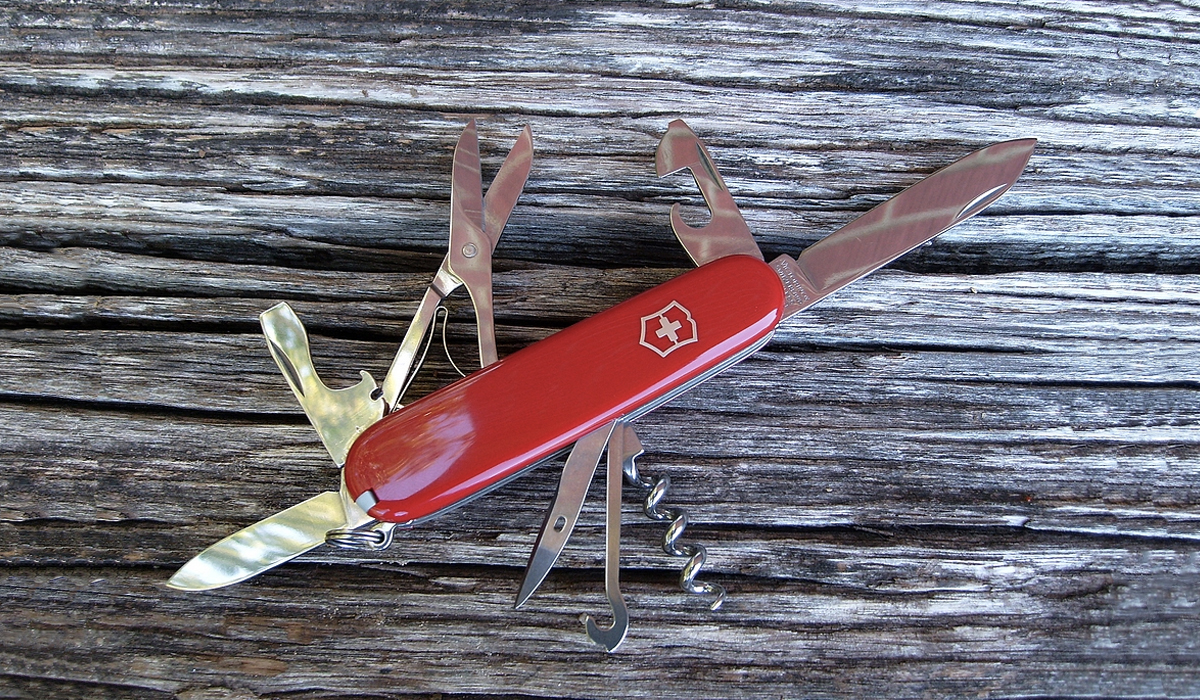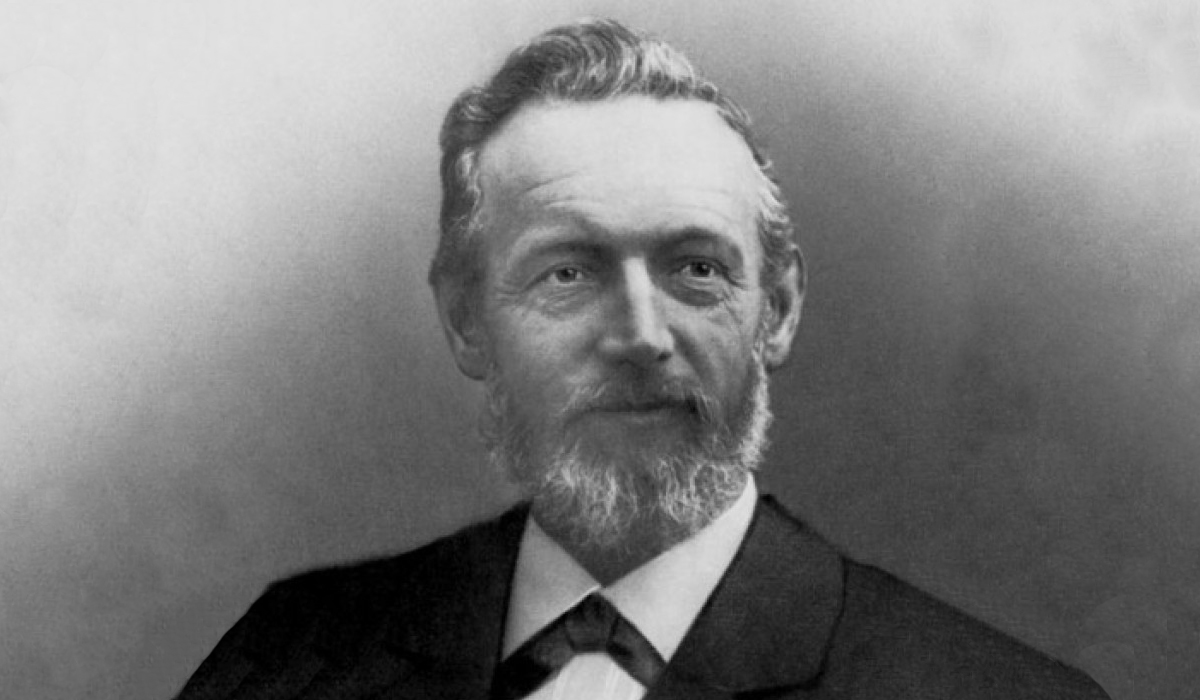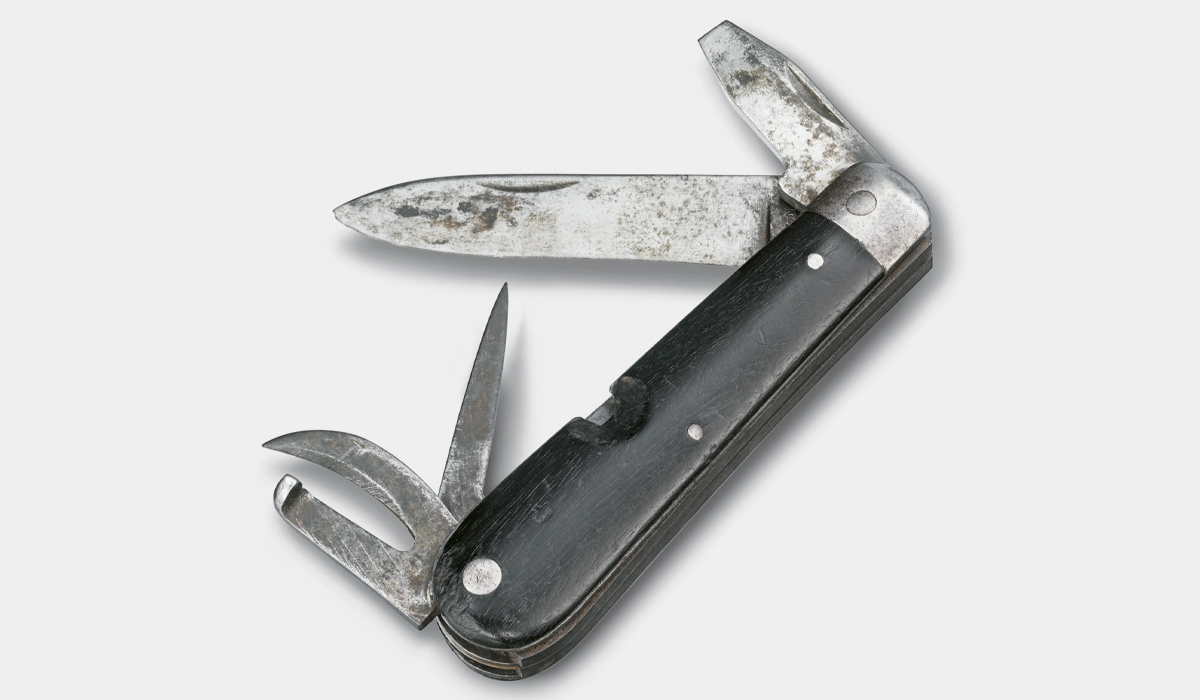History of Swiss Army Knife
The Victorinox Swiss Army Knife may be the world’s most successful knife. Trying to quantify its popularity, I found myself rifling through countless Google searches. And invariably, every knife list with criteria like “best,” “iconic,” “classic,” “top,” etc., included a Swiss Army Knife.

Why?
The pocketable knife’s well-established history is a major contributor to its success. It might not have been the first multitool, but it popularized the now-ubiquitous category as early as 1891. Every Swiss male, under the country’s mandatory military service requirement, has carried one. Eventually, the Swiss Army Knife arrived at worldwide popularity.
And for good reason — I use my keychain Victorinox knife legitimately 3 times as much as any other knife in my kit.
Victorinox leverages a long tradition of experience and quality to produce such a useful tool. Here’s how it all went down.
Bringing a Knife to a Gun Fight: Origins
The iconic knife was invented because of a gun. In 1890, the M1889 was the Swiss Army’s standard-issue rifle. It was a behemoth, and its maintenance required the use of a screwdriver, so the military decided to purchase a standard-issue folding knife that included one.
It had to purchase its first order of 15,000 knives from Wester & Co. in Germany because no Swiss manufacturer had operations yet big enough to handle it. That knife, the Modell 1890, had oak handle scales and four (familiar) tools: a blade, an awl, a can opener, and a screwdriver. It wasn’t the world’s first multitool — that distinction belongs to a surprisingly recognizable five-tool rig made in the 3rd century BCE by an unknown Roman — but it would soon be its most popular.
In 1891, one year after its inception, the knife (or multitool) had caught the eye of Karl Elsner. Elsner ran a company that made surgical equipment. By the end of the year, he’d taken over manufacturing of the Modell 1890. Elsner and his company soon made a key innovation: they installed a spring in the knife’s handle to secure the folding tools. Using only one spring, tools could now be mounted on both sides of the handle.
Elsner patented the updated knife in 1897, and the Swiss Army Knife as we know it was born.

Brand Competition & the Influence of Stainless Steel
Elsner soon had competition for manufacturing the Modell 1890. In 1893, the Swiss Army also contracted Paul Boéchat & Cie, which later became Wenger, to build the design. For a while, things were a little confusing. Wenger made “the Genuine Swiss Army Knife,” while Elsner made “the Original Swiss Army Knife.” And both brands used the cross and shield emblem.
Two key events in the early 1900s helped determine the ongoing signature of the Swiss Army Knife. First was the advent of stainless steel, and the second was the death of Karl Elsner’s mother. In 1909, Elsner renamed his company Victoria in his late mother’s honor. In 1921, the company became “Victorinox” when it added “inox” — the abbreviated form of the French word for stainless steel — to its name.
Today, Victorinox makes every Swiss Army Knife, an achievement the company claimed with its acquisition of Wenger in 2005. The decades-long competition sparked innovation, and each company eventually made pretty far-out designs, like the 7-pound, 87-tool Wenger 16999 Swiss Army Knife Giant. When Victorinox consolidated the catalog, it retired some of those rare birds.

Schweizer Offiziersmesser
The name “Swiss Army Knife” is, in a way, a misnomer committed by globetrotting Americans. As the knife gained worldwide popularity, it was bound to happen (as is so often the case). In Germany, the knife is called the “Schweizer Offiziersmesser,” or, more simply, the “Sackmesser.” WWII American soldiers struggled to pronounce either term (surprise surprise), so they applied the simpler, depictive “Swiss Army Knife.”
Thus assuming its final form in branding, the knife was poised to become the global classic it is today.
And since every Swiss soldier already had the knife in his pocket, it had a broad user base built-in. The Swiss military is actually fairly extensive owing to its conscripted service requirement. Every male must serve a minimum 260-day term (or opt-out and choose 390 days of civil service). Each soldier has also had the option not to carry a gun. But they all get a Schweizer Offiziersmesser, which is not considered a weapon.
Why Swiss Army?
No matter what you call it, you can find a use for a Schweizer Offiziersmesser. I keep a Victorinox MiniChamp Alox on my keyring and easily deploy it once a day, if not more (and I don’t even have to disassemble a 19th-century firearm regularly).
The Swiss Army Knife may not feature the designer steel or futuristic features other pocket knives do, but it does have a proven track record that won’t quit.



